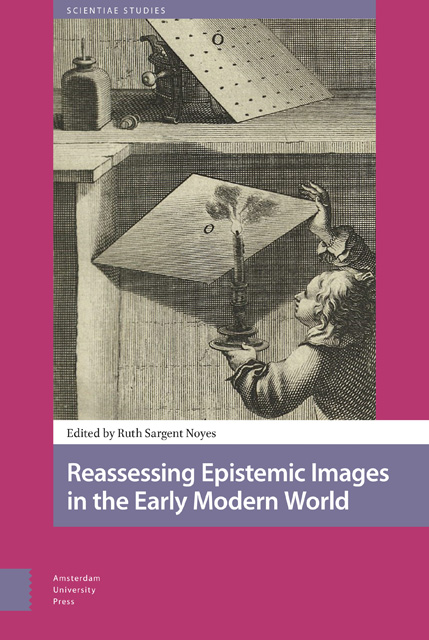Book contents
- Frontmatter
- Dedication
- Table of Contents
- 1 Prologue: For a Metaphorology of Engraving: From Epistemic Images to an Imaged Epistemology
- 2 Introduction: Pittura filosofica: Etching Galileo’s Sunspots and the Discursive Field of Early Modern Epistemic Images
- Part 1 Approaches to Print Matrices
- Part 2 Imprints as Instruments
- Part 3 Imprint, Knowledge, and Affect
- Bibliography
- Index
6 - Academic Print Practices in the Southern Netherlands: Allegory and Emblematics as Epistemic Tools
Published online by Cambridge University Press: 15 June 2023
- Frontmatter
- Dedication
- Table of Contents
- 1 Prologue: For a Metaphorology of Engraving: From Epistemic Images to an Imaged Epistemology
- 2 Introduction: Pittura filosofica: Etching Galileo’s Sunspots and the Discursive Field of Early Modern Epistemic Images
- Part 1 Approaches to Print Matrices
- Part 2 Imprints as Instruments
- Part 3 Imprint, Knowledge, and Affect
- Bibliography
- Index
Summary
Abstract
This chapter demonstrates that student life constituted an important source for the creation and circulation of printed images by considering a visual domain that flourished in the Southern Netherlands in the seventeenth century: illustrated college notebooks. The well-preserved corpus presents an ambivalent relationship between knowledge and imagination. This essay focuses on the symbolic language applied to lecture notebooks, the usage of which was encouraged in similar academic practices such as Jesuit affixiones and thesis prints. It also addresses the materiality of prints and their manipulation by students. My hypothesis is that the sphere of learning was, via the printing world, bathed with Jesuit culture and visual language that perpetuated in higher education.
Keywords: lecture notebooks, allegory, emblematics, materiality of prints
Introduction: The Visual Languages in Illustrated Lecture Notebooks
The curriculum at the Old University of Louvain (founded 1425) remained that of a typically medieval institution in the early modern period. Students started at the Studium Generale of the Faculty of Arts of Louvain before being (possibly) admitted to one of the higher faculties of medicine, law, or theology. The magister artium title required nine months’ training in logic or dialectic, nine months of physics, four months of metaphysics and ethics, and, finally, three months of rehearsal exercises (repetitiones). In the Artes faculty, students took verbatim notes of the text dictated by teachers during class. Taking and saving notes was a widespread habit among humanist scholars, scientific observers, and travelers. In many early modern universities, the professor spoke at dictation speed, which resulted in fairly reliable copies of the course. It also happened that the text was copied or even bought in advance, on the basis of course notes from previous years.
Louvain’s well-preservedwell-preserved volumes of lecture notes or dictata were often embellished by students with drawings and then engravings. This tradition of illustrating lecture notes flourished in the first half of the seventeenth century, continuing until the mid-eighteenth century. Visual material includes logical diagrams, arborial diagrams, tables, “fill-in-the blank” title pages, humoristic doodles, ornamental initials, landscapes and views of cities, portraits of rulers, geometric patterns, scientific instruments, astronomical representations, anatomical plates, attributes and personifications, religious and mythological narratives, satirical or grotesque figures, frames and cartouches surrounding handwritten titles, drawn head pieces and scrolls, object-shaped text, small devotional vignettes, illustrated colophons or chronograms, and symbols of the four pedagogies.
- Type
- Chapter
- Information
- Reassessing Epistemic Images in the Early Modern World , pp. 131 - 152Publisher: Amsterdam University PressPrint publication year: 2022

